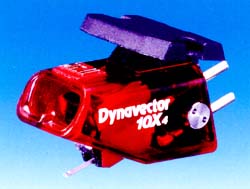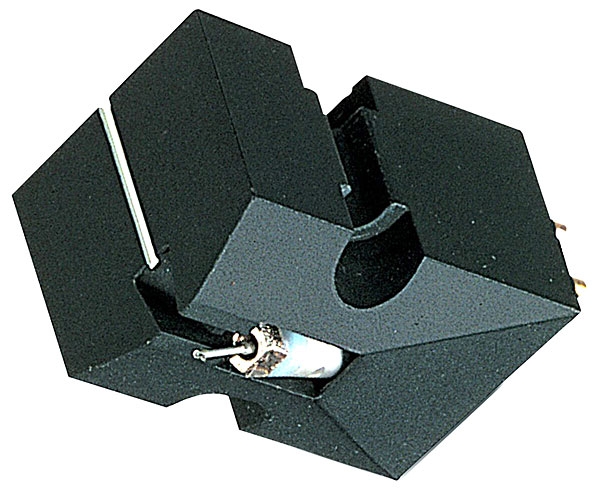Apart from the LP12 turntable, Linn has always collaborated with other firms to produce its analogue goods — the first Ittok tonearm was called after one Mr. Ito, the Japanese co-creator, and the majority of the early ones were built in Japan. The cartridges have also been outsourced; the most recent Linn Kandid moving coil is a collaboration with Japanese company Lyra, whereas prior Linns were made by Goldring and Audio Technica…
Linn’s best-selling and most famous moving magnet was the K9, which was apparently a modified Audio Technica AT-95E. At the time of the K9’s introduction in the mid-1980s, the AT cost roughly £13 and the Linn around £59. The K9, on the other hand, wasn’t simply the same cartridge with a different paint job; Linn essentially replaced the plastic body of the ’95 with an aluminium alloy one. The upshot was a 1.3g weight gain, but a more rigid and precise assembly that gripped the stylus and the headshell better — you could tighten up a K9 in the headshell to the point where the AT-95E’s body would just break and fall apart, but the same might happen to the headshell with the K9! The stylus was additionally improved, with the standard elliptical diamond being replaced by a Vital stylus shape.
Other than that, the cartridges were similar, having the same copper coil wire, for example. The improved stylus provided somewhat better channel separation numbers (1dB at 1kHz vs. 1.5dB), but the output was identical at a healthy 4.5mV, with a suggested load of 47k Ohms and a capacitor of 100-300pF. The tracking force was set to 1.7g, and the cantilever was made of the same durable aluminium.
The K18 was a further altered K9 that arrived at the end of the 1980s. PC-OCC coil wire was used, as well as a specifically adapted stylus enclosure fastened to the body for optimal rigidity. It increased the weight to 7.7g while keeping everything else the same. It was a pretty costly moving magnet back in the day, selling for around £150, and it didn’t quite reach the same level of popularity as the K9.
Soon after, a K5, which was effectively a rebadged Basik and sold for roughly £30, was released. With K9 coils, wire and shielding, and an elliptical diamond stylus, it was a better-specified AT-93. It received a grey stylus assembly, as did the K9, which was a bit more swish than the original yellow.
The Linn K9 was a mixed bag in terms of sound. It sounded like a cheap Audio Technica moving magnet on steroids: quick, energetic, and detailed. It wouldn’t win any awards for delicacy, refinement, or elegance, though. Its “up and at ’em” nature complimented the Sondek’s slightly (back then) warm and relaxed intonation perfectly, and it made for a beautiful synergistic marriage, as with so many Linn Products. It was also good enough to be used in Linn’s top tonearm, proving Linn’s adage that a lousy cartridge in a good arm is preferable to the other way around. The K18 provided a little more punch and detail, but it couldn’t compete with comparably priced moving coils.
K9s are cheap and cheerful these days; most will be worn out, but a well-preserved one with a good stylus will still provide a pleasing listening experience. It’s like a Ford Sierra family car in that it’s still surprisingly decent by today’s standards, but you’d still prefer the current version. A brief look through a microscope will reveal whether the stylus is on its way out or if you should just listen to how it sounds at the end of an LP side. Depending on the quality and provenance, expect to pay between £25 and £50.







